#Classic Film Reviews
Explore tagged Tumblr posts
Text

Different day different bag, same problem. I want to carry more than I can, but I have to remember to limit myself to what I know I need and can comfortably carry on my shoulder for a few hours
#art#journal#books#bookstagram#booktok#bookblr#books and reading#book blog#book quotes#book review#cozy academia#dark academia books#dark academia aesthetic#dark academia moodboard#art academia#light academia#classic academia#light acadamia aesthetic#cozy aesthetic#study aesthetic#ocean aesthetic#vintage aesthetic#film photography#film camera
173 notes
·
View notes
Text
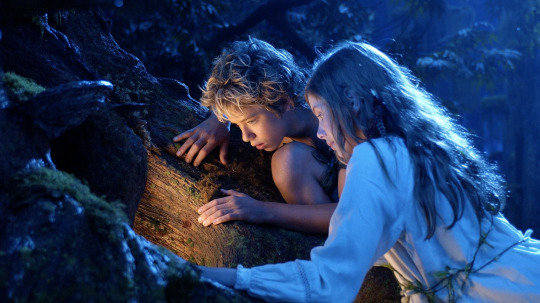
P.J.Hogan's 'Peter Pan' is still an underrated masterpiece 20 years later
Peter Pan is a live-action fantasy adventure film directed by P. J. Hogan that reimagines the classic story of Peter and Wendy. The screenplay was written by P. J. Hogan and Michael Goldenberg and was released in cinemas in December 2003. The screenplay is based on the 1904 play Peter Pan, or The Boy Who Wouldn’t Grow Upand the classic novel Peter Pan by J.M.Barrie, which was originally published under the title Peter and Wendy.
The film tells the story of a young Edwardian girl, Wendy Darling (Rachel Hurd-Wood) and her two younger brothers John and Michael. On the night she is told she must grow up, a wild, fairy-like boy called Peter Pan (Jeremy Sumpter) flies into her room with his high-maintenance fairy Tinkerbell. When he learns that she tells stories, he whisks Wendy and her two brothers away to a magical Island called Neverland — where you supposedly don’t “grow up” — so that she can mother his henchmen, the Lost Boys. There she fights pirates led by the evil Captain Hook (Jason Isaacs), meets mermaids, dances with fairies, falls in love and grows up.

I have strong family connections tied to Peter and Wendy and J.M.Barrie. My great, great uncle Nico was one of the sons of Sylvia Llewelyn Davies'. He and his other brothers "the Lost Boys" were adopted by J.M.Barrie; which ultimately inspired him to write Peter Pan. Nico’s daughter Laura — my cousin — who I met for the first time a few years ago, told me that she was flown to Australia for the filming of P.J. Hogan’s Peter Pan because she was J.M.Barrie’s goddaughter. She told me that she was thrilled with the cast, especially Jason Isaacs, who played Captain Hook and Mr Darling. She also mentioned that Jeremy Sumpter, who played Peter Pan, was a lovely boy. However, she said she was very surprised and sad that the film wasn’t a big success as she really liked what they did with the story. I have loved the fairytale of Peter Pan from a young age, and learning that I am literally part of the family that inspired the story was very exciting and I’ve only begun to internalise it more as I’ve grown older.
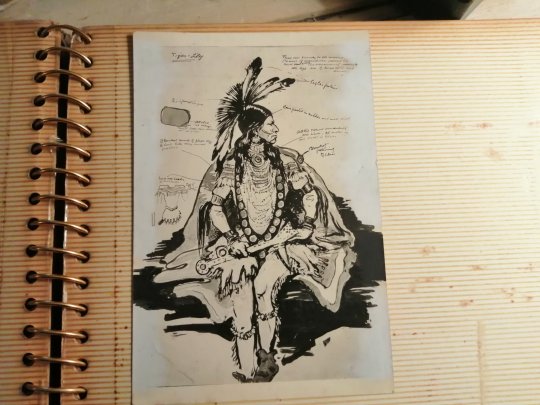
When I was in my mid-twenties, I was diagnosed with a high level of Autism. One of my main symptoms was labelled “ageless”, which in simple terms means that one half of me is still a child that I can’t mentally leave behind. I can’t do many things that most adults can do, such as pay bills, drive a car, look after my own well being etc. I flap my hands when I get excited. I bounce. I sometimes speak in a baby voice. I overcommit to things I enjoy. I admit that it was hard to come to terms with the diagnosis when I first received it. But over time, I’ve come to believe that the two can coexist in a healthy way. I believe that I am an adult who is able to develop and grow while still carrying the child within me, and that this is not seen as a bad thing. I think Peter and Wendy can be seen as a reflection of that.

I was first introduced to P.J. Hogan’s Peter Pan a few years after it was released (I was maybe nine or ten years old), and I absolutely loved it. It wasn’t only one of my favourite film adaptations, but one of my favourite movies of all time. What surprised me most about the film at that age was how dark and gruesome it was, and full of this underlying sexual tension that I hadn’t expected at all from Peter Pan. Even today, this film still has a special place in my heart. It is made with so much passion and love for the original text that I can automatically put myself back into the story. After watching the film again as an adult, I almost immediately opened my copy of Peter and Wendy and started reading. I would even go so far as to say that I prefer the film to the book. However, part of me wishes that the age rating had been set much higher, as the dark and gruesome moments were some of the strongest parts of the film adaptation. This is possibly why some critics and viewers had difficulty categorising the film at the time.
However, I often consider P.J.Hogan’s Peter Pan to be the same equivalent as Joe Wright’s Pride and Prejudice. (which came out a few years later in 2005, starring Keira Knightley and Matthew Macfadyen). The film moves at the same dreamlike pace. It is light, dark, colourful and deeply romantic.

I also often prefer P.J.Hogan’s Peter Pan to the 1953 Disney Animation of the same name, even though it’s the version I grew up with and liked. I find it much less straightforward and innocent. Also, the 2003 film is much closer to the original source material, which I loved reading as a teenager, and to J.M.Barrie’s original vision. The film manages to reflect the same intellectual subtext and depth of the novel while retaining the whimsy and magic.
Magical Realism

Peter Pan was a perfect blend of fantasy and realism. A lot of media these days focus too much on “realism” and make their sets and CGI look bland and washed out. It’s a common myth these days that no one likes whimsy anymore; it’s somehow seen as too childish. As a result, much of the magic of fantasy is lost. But in this Peter Pan, a lot of colour was used in the set design and cinematography. Everything was so brightly and colourfully lit. Most fantasy films these days, including the new live-action adaptation of Peter Pan and Wendy on Disney+, are all so gloomy and dark. You almost have to light up the screen to make out the actors’ facial expressions or what’s happening in the scene. But this film understands that a viewer who watches fantasy wants to be swept away, but also wants a certain amount of believability. Although the film contained a good amount of darkness, it did not shy away from being cartoonish either (which I think was partly inspired by the Disney animation), i.e. characters blushing or bouncing on the clouds.
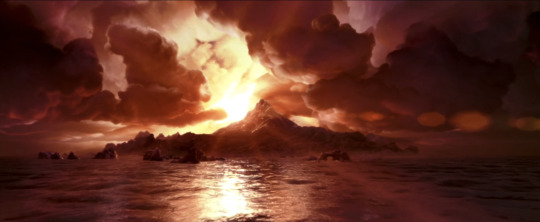
The design of Neverland was breathtaking. I think the CGI, although criticised by some, made the island and creatures look more dreamy and fairytale-like. It was a good combination of CGI for the landscapes and real backdrops for the jungle, so there was enough magic and believability to transport the viewer into the story. A bright colour palette was used for the landscapes, while down-to-earth colours such as browns and greens were used on the ground, such as in “The Lost Boys Hide” under the tree, to give a sense of realism. The costume department also reflected this, from the majestic reds and blacks of the pirates, to the earthly colours of blue and red for the Native Americans, to the natural greens and browns of the Lost boys. I noticed that the colours in Neverland were used as a contrast to the Edwardian London back home, which is realistic but dull compared to the island.
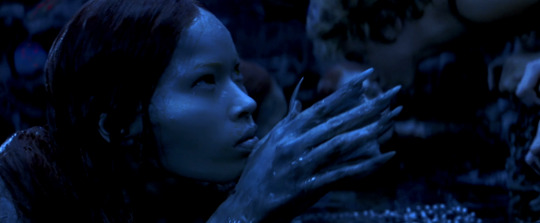
One aspect I liked was that the lighting on Neverland always changed depending on the mood of the scene- unlike the naturalistic lighting on Earth. It was almost as if the island was a living being. For example, when there was a fight on the ship, the lighting was red. When Peter took Wendy to the mermaids, who were scary and frightening, the lighting was dark and blue. This created a surrealistic atmosphere, almost like a fever dream or a kind of nightmare.
Sometimes the environment changed depending on Peter Pan’s mood in the respective scene. I particularly liked how Peter Pan influenced the weather on Neverland. Just his mere presence when he flew to the island changed the entire atmosphere in an instant. His feelings also determined whether it was summer or winter. In other words, its suggested in the film that the longer he has been there, the more the island has become a part of him, so that he can no longer leave it. It’s almost as if the island has transformed him into a magical being.
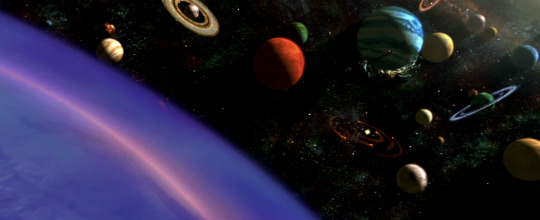
The exuberant musical score by James Newton Howard: I’ll never forget that. I think that was one of the first movies I saw where I actively noticed the music because it was so brilliant. Even today, the “Flying” soundtrack still gives me goosebumps. It perfectly encapsulates the whimsy, joy and imagination of Peter and Wendy. I loved that there were always different variations. One of my favourite pieces from the movie is ‘Fairy Dance’, which starts off cheerfully and moves up and down depending on the characters’ conflict/what they’re saying in the scene.
Cast
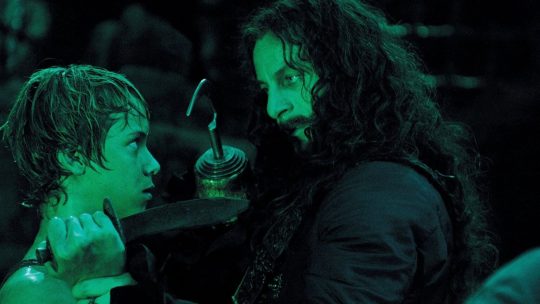
The cast of this film adaptation was magnificent. The look of all the actors not only matched the book description, but also the mood, especially with the Darling family. One of the standouts was Olivia Williams as Mrs Darling. She captured the gentleness of the character perfectly. I also loved the new addition of Aunt Millicent, played by Lynn Redgrave. She fitted into the story so well that I was surprised not to find her in the novel. She had the perfect amount of ridiculousness and hilarity that suited J.M.Barrie’s style.
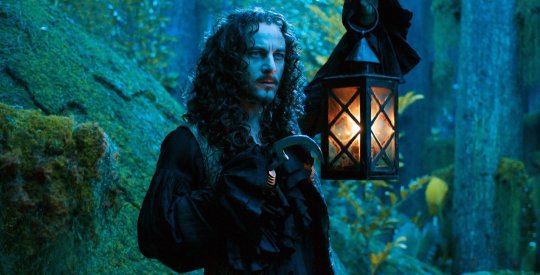
One particular member of the cast we can probably all agree on that was perfect, was Jason Isaacs, who played both Wendy’s father Mr Darling and Captain Hook. He was certainly a star in this film for sure. I just can not think of anyone who could play him better, especially in a live-action film adaptation. He was particularly good in the role of Captain Hook. When I first saw the film as a child, I did not know that Captain Hook and Mr Darling were played by the same person until my dad pointed it out to me because he was so good. I loved how they portrayed Wendy’s dad as shy and reserved, as opposed to Captain Hook who was flamboyant and sinister. Mirror versions of each other in different realities — that’s a common theme throughout the film. As Captain Hook, Jason Isaacs perfectly captured the essence of viciousness, deviousness and brutality that was necessary for the character. But also the deep loneliness and frustration behind it all. I have seen a quote that was supposedly cut from the film (and never should have been) that provides so much context for his hatred of Peter Pan:
“Imagine a lion in a cage and into that cage flies a butterfly. If the lion was free, it would pay no heed to such creature. But the lion is not free…and so the butterfly drives him slowly insane.” — Captain Hook
They did a really good job of showing how Peter Pan and Captain Hook are mirror images of each other. Peter Pan is a child who secretly wants to be an adult, while Captain Hook is an adult who secretly wants to be a child. Both fight each other for different reasons, but the goal is the same. For example, there is a great scene towards the end where Captain Hook uses his wits to defeat Peter in a fight. Here it becomes clear that there is deep symbolism for the inevitability of adulthood and the loss of childhood. Jason Isaacs really showed off his acting talent here. I liked that he wasn’t portrayed as a “dumb villain”, which he easily could have been.
There were also some great performances among the adults. Most notable was Richard Briers as the ‘pirate’’ Smee. But the child actors, especially the lost boys, really held the movie together. Their solid performances made it so believable that the island was ruled by children. I loved Theodore Chester as Slightly. He was very charming and funny in that role.
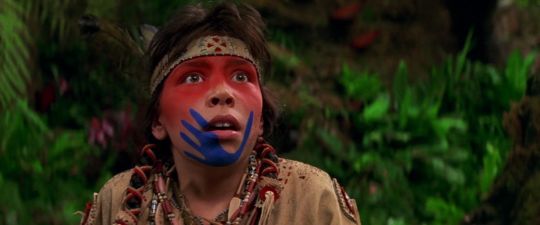
Another member of the cast I thought was brilliant was Carsen Grey, an indigenous actress of Haida descent, who played Princess Tiger Lily. I liked that they let her speak her ancestral language, Mohican, in this film. Although this film came out in the early 2000s, it is the only version of Peter and Wendy in which Native Americans are neither erased nor white-washed even though the representation is far from great. Considering how they’re treated in the novel, it’s perhaps for the best overall that they limited some of their scenes. However, I liked how firey she was in this adaptation and not the damsel in distress she was portrayed as in the Disney animation. I think it was a wise decision to cut the infatuation she had with Peter Pan, as it was really just one line in the book that would have added unnecessary drama, and all in all, it would have fallen short if all the female characters were jealous of each other.
They also downplayed Tinkerbell’s jealousy in this regard, portraying it more as her trying to protect Peter Pan’s youth from romantic advances, as hinted at in the novel, and also being sad that Wendy is attracting all of Peter Pan’s attention. Ludivine Sagnier has, in my opinion, succeeded well in making Tinkerbell equally repulsive and endearing, as befits the character.
Wendy Darling
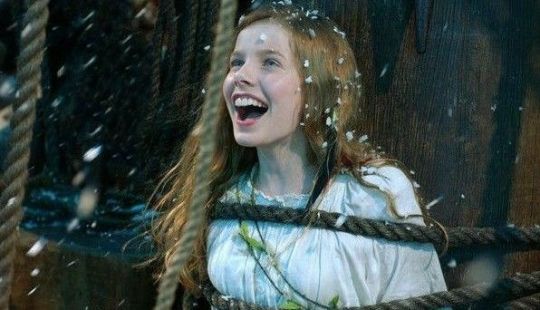
Rachel Hurd-Wood was the perfect cast for the role of Wendy Darling.I was actually surprised to learn that this was her first film role ever, because she was a natural. She effortlessly possessed the same caring nature and charm that makes Wendy so endearing. She is exactly how I imagine the character when I read the story. When people talk about Peter and Wendy, they always mention Tinkerbell, Pan or Hook, but personally I am always drawn to Wendy. She is the real heroine of the story. After all, she was the main reason for Peter to bring her and her brothers to Neverland.
What always amazes me about Wendy’s role in the story is the fact that Wendy literally doesn’t spend much time being a “child” in the time she spends in Neverland. When she’s not escaping death at the hands of mermaids or pirates, she acts as a mother to the ‘lost boys’ and her brothers. She asks herself what she really wants from life. In comparison, she was allowed to behave more like a child at home in Edwardian London. Neverland is not a place where you never grow up. It’s the place where she chooses to grow up. Many people have described Neverland as a manifestation of Wendy’s subconscious as a result of trauma, and I’ve never found that to be more true in this adaptation.
One of the reasons why I think P.J. Hogan’s Peter Pan is the best adaptation of the novel is the fact that the film revolves around Wendy’s coming of age. I loved that they expanded on her love of storytelling and also gave her a tomboyish streak. Instead of just being on the sidelines, she’s able to get involved and fight pirates while retaining many of her feminine traits such as her maternal instincts and romantic feelings for Peter. She makes mistakes and sometimes gets dragged into things she knows she shouldn’t do. But in the end, she triumphs.

In many film adaptations of Peter and Wendy that I have seen, Wendy is either only present in passing or not at all. Characters like Peter Pan, Captain Hook and Tinkerbell always take centre stage, which I think is a strange decision as they are part of Wendy’s story and not the other way around. Peter Pan is meant to metaphorically represent the childhood she does not want to give up (which is why the character is always played by a woman in the original play, as he is a mirror image of Wendy). And Captain Hook (J.M.Barrie also wanted him to be played by the same actor as Mr Darling) represents the dark side of her father, or rather what she imagines adulthood to be. This is particularly emphasised in this film adaptation because he is an important factor in her being told to grow up. The father, the concept of adulthood, and Peter Pan, her childhood, are at constant war with each other.
“You’re not supposed to be like Peter, who kept every good and bad aspect of being a child and can’t tell right from wrong. You’re not supposed to be Hook, either. He let go of everything childish and loving about him and became bitter and evil..You’re supposed to fall in the middle, to hold onto the things about childhood that make it beautiful — the wonder, the imagination, the innocence — while still growing up and learning morality and responsibility. You’re not supposed to be Hook. You’re not supposed to be Peter Pan. You’re supposed to be Wendy Darling.” — @maybe-this-time
The 2023 film Peter Pan and Wendy took a different approach, by making Wendy a kind of powerhouse who always saved the day and outshone Peter Pan overall. In my opinion, the 2003 film adaptation emphasised very well that Wendy really is the yin and yang. She's allowed to be romantic, be rescued by others and at the same time determine her own destiny and stand up for herself. Because that’s what her journey in the adaptation is all about. She is pressured by all the adults in her life to grow up. She allows herself to be seduced with the prospect of an eternal childhood by Peter Pan. Then she realises that it is not self-fulfilling. She is tempted by Captain Hook with the concept of adulthood. And finally, she finds a balance between these two extremes on her own terms. By the end of the film, Wendy has made her peace with growing up while still remaining a child at heart. That requires a certain mental strength that we should all strive for.
Peter Pan and Wendy Darling
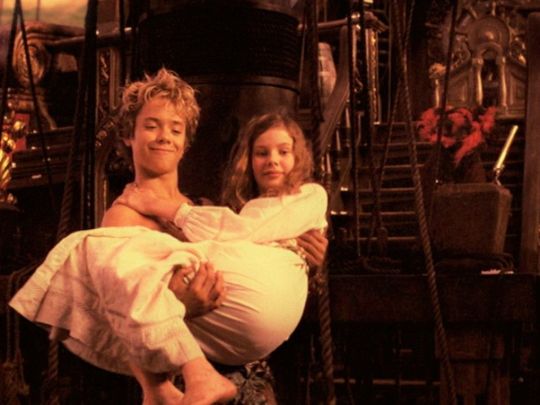
In most adaptations of Peter and Wendy, such as Hook and Syfy’s Neverland, the focus is on the title character Peter. In the more recent film adaptation Peter Pan and Wendy, the focus is on Wendy. This film adaptation of Peter and Wendy, on the other hand, sticks more closely to the original source material, as the story focuses on Peter and Wendy’s relationship. This is perhaps the reason why I always hesitate when I watch other adaptations, because these two characters are supposed to go together. It’s definitely a relationship that can be portrayed in all sorts of ways because they are symbolically the same person.
Although there is no romance between Peter and Wendy in either the original novel or the play, Wendy quickly develops romantic feelings for Peter which, as a prepubescent child, he does not consciously reciprocate as he has no concept of love other than that of a mother’s. Although Peter cares deeply for her, he ultimately only longs for her to be the maternal figure that is missing in his life. One could go into the symbolism that Peter and Wendy are one and the same, and that this is an expression of Wendy learning to love herself. But in a literal sense, J.M.Barrie had unintentionally created this very strong potential between the two characters. And I personally feel if your'e going to make an adaptation of Peter and Wendy that potential needs to be explored in some way, even if it’s not necessarily romantic.
Hogan recognised this potential and developed the romantic elements, e.g. ‘the “thimble” from the novel, into a very real and tangible plot. In other adaptations, Peter and Wendy’s relationship is rather one-sided. But in P.J. Hogan’s film adaptation, however, it is not at all. Over the course of the film, Peter and Wendy fall deeply in love with each other.
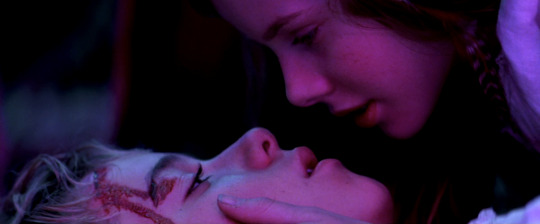
Rachel Hurd-Wood and Jeremy Sumpter had a remarkable on-screen chemistry for young actors, which helped give the adaptation its own identity. Whenever they interacted on screen as Peter and Wendy, it was — like the glittering pixie dust of Tinkerbell — simply magical. The off-screen chemistry between the two definitely helped make the romance so believable as well. When I was younger, I didn’t like romantic subplots in family films. I personally found that they clogged up the main plot because the “romance” tended to be very one-dimensional- but Peter and Wendy in the 2003 film version were simply enchanting.
In the original novel, J.M.Barrie alludes to the possibility of a romance between the two. In the film adaptation, they go all out. Their love story was written so beautifully and profoundly, while staying true to the original text and J.M.Barrie’s themes. This made the conflict hinted at in the novel of “staying in Neverland with Peter or growing up on Earth with Wendy” even more poignant and relevant, because in reality there was only ever one option. They couldn’t find a way to have both. That made the ending even more “heartbreaking” for me as a child, because even though they had the chance to be happy together, she couldn’t give up on growing up to stay. And he couldn’t give up being a child to leave, even though it was a natural progression for him.
Peter Pan
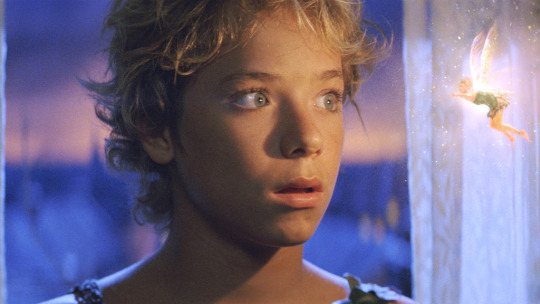
Jeremy Sumpter delivered a fantastic performance as Peter Pan. Not only did he perfectly match the illustrations, but he also managed to perfectly capture the essence of the charismatic, mischievous little boy from the novel. What’s more, of all the versions I have seen so far, he is by far the most accurate, right down to the clothes made of skeleton leaves, the dirty fingernails, the feral mannerisms, the traumatised soul behind the charm and the downright creepy insinuations. By today’s standards, you could almost take Peter Pan for a grown man who consciously decides not to behave like this.
However, when I watch the film again as an adult, I can now understand why he has reservations about growing up in Edwardian England and would rather remain a “child” in Neverland forever. As Peter says in the film, “Would they send me to school? And then to an office?” I feel like most of us today have so many choices as we get older, but back then it was much more limited. The choices were very restricted in that “heterosexist” environment. You could only be a certain thing, and it was much harder to hold on to the pleasures of life. I can now also understand the initial reactions of Michael and John to Peter: He must have seemed scandalous to people at the time. His bright colours, his inappropriate clothing and his behaviour are repulsive to the boys, but Wendy is immediately fascinated and attracted. I think it was a deliberate choice that he is the only character with an American accent to set him apart from the rest of the cast; to emphasise the wildness of the character and his non-conformity to the people of Edwardian London.
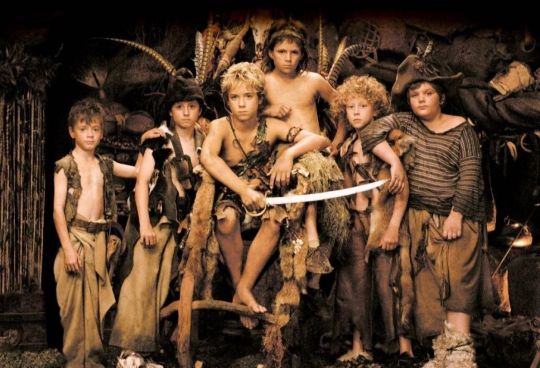
Another small aspect I liked was the suggestion that the Lost Boys, although they lived with Peter and obeyed his commands, lived in constant fear of him and did not worship him as in other adaptations. (A fear that is justified as Peter tries to kill them more than once in the film). What the 2003 film adaptation captured perfectly about Peter's character was: how terrible of a person he really is. Peter Pan is a hero when he goes on adventures and fights pirates. You could argue — via the quote “Leave Hook to me” (which Peter says to her in the film) — that Peter is Wendy’s split self who can fight her father (Captain Hook) for her, just like antibodies do with germs when we can’t handle them ourselves.
However, when it comes to understanding emotions, caring about others, even his henchmen, the Lost Boys, and doing anything that inconveniences him, Peter Pan is possibly as bad as Captain Hook. This makes Wendy’s decision to leave him all the more powerful. Although she was initially seduced by his adventurous life, she soon realises that his “life” of joy and adventure is not fulfilling at all. Because in reality, there is no real joy. There is no real adventure. In reality, his life is empty because it is not earned. In addition, she realises that she is gradually losing her memory of the outside world, including her parents - a sign that she is “slowly awakening from the dream”. This leads Wendy to realise that she wants more than what he can give her in Neverland (e.g. romantic love) and decides to leave. Being alive means feeling, accepting and growing. However, as long as Peter remains a boy, he can never truly be alive. Peter Pan conveyed this important message, whereas earlier film adaptations, including the Disney animation, did not.
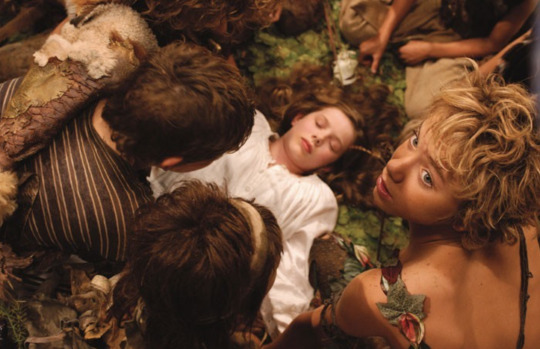
One of the reasons why good adaptations of Peter and Wendy are so hard to come by, especially in this day and age, is not only because they adapt a performative story that exists in layers of subtext. They also work with a protagonist who doesn’t change. Who doesn’t develop in any way, neither negatively nor positively. Not even just physically, but also mentally. (Even Eli from Let the Right One In, the child vampire, changes in the course of the story). At the end of day, Peter Pan is ultimately there to serve someone else’s story. It works in a fairy tale format. But it doesn’t usually translate very well to the screen because it often leads to one-dimensional storytelling. Even if it seems so natural, it doesn’t come naturally.
However, this adaptation allows Peter Pan to grow. The writers expanded on the small aspect from the book, which is the moment when Wendy enters Peter’s life; he begins to feel emotions. Not just love. But anger. Fear. Sadness. Pain. Disgust. And above all: self-awareness. Almost like a version of puberty in condensed time, as if the change suddenly caught up with his body. When Wendy brings this up, Peter immediately rejects it out of fear. I think most of us can all relate to this when we were in the midst of growing into a young adult. We experience feelings that are scary and new, that we can’t yet fully understand or even want to. For Peter Pan, falling in love is exactly what he is afraid of: growing up and no longer being a child. This adds to an interesting conflict that arises between the two when she asks him to leave with her.
“The thing about Peter Pan is, he’s a coward. Had the chance of a lifetime and he bottled it. Just fucked off back to Neverland. All alone, forever he was, by his own hand. Poor old Wendy, she had to grow old without him.” — Skins, 6x07 “Alo”
In the original novel, the reason Wendy can’t take Peter Pan with her (apart from the fact that he refuses to grow up) is the same reason Lyra in His Dark Materials can’t take Pan — the animal manifestation of her soul — on the boat to the land of the dead. She has to split in order to grow up and leave a part of herself behind. She can’t keep both in order to move on. But that does not mean I always agree with the ending either. In which Peter remains a child and takes Wendy’s future descendants to Neverland and back to look after him. It leaves an icky aftertaste, but at least it fits in with the story J.M. Barrie wanted to tell.

Even though the adaptation conveys the same message, that Peter Pan is the manifestation of Wendy’s youth, even to the end. In this version of Peter Pan, that is no longer the case. By the end of the film, the way he holds himself is different. The way he looks wistfully through the open window and solemnly says, “To live would be an awfully big adventure,” : a sign of self-awareness, while Wendy happily reunites with her family. So much so that Tinkerbell has to pull him by the hair to stop him from joining them and reconsidering his decision. Peter is now old enough to know that he loves Wendy. Maybe he’s also mature enough to know what he’s missing, but he knows he can’t have her the way he wants, so he does the most selfless thing he’s ever done in the whole film by letting her go.
There is no such conflict at the end of the 1953 Disney animated film. Peter Pan is described by Wendy as “wonderful”. In reality, everyone else gets their happy ending, except him, because he deliberately chooses not to. Peter Pan very much turns himself into a tragic figure because he is afraid of the most natural thing in the world. He is afraid of life. And I feel like this version of the story knew that and expressed it strongly, which makes me conflicted now as an adult. I’ve seen endings like this before, where two people fall in love but do not end up together because they grow apart or they are both interested in different things, and it’s very important to reach those points in different ways. It very much reflects real life and is also reminiscent of first love. How that love never really fades. It reminds you of simple times, even when you’ve grown up and moved on. That a part of you is still at that age when you look back on it. These endings happen because people grow — which Peter Pan does not.
“Peter in the books lives in oblivious tragedy. He may suspect that he’s not fully happy, but he tends to forget about it… yet this Peter doesn’t… Wendy leaving him and growing up to be a wife of another man is his unhappy thought…It’s the loss of innocence since Peter could not forget this…It’s the process of growing up…all but confirms that Peter’s character arc in the film is one of accepting the fact he too must grow up to be happy.” — @rex-shadao
And I think that’s the real reason why his character is both the strongest and the weakest part of the adaptation. The writers didn’t make it clear enough that Peter Pan forgets in their version of the character. In the novel, Peter Pan forgets everything automatically, which is why he can exist in this limbo of childhood and not go mad. However, as mentioned earlier, this version of Peter Pan is old enough to remember and, more importantly, to feel. Even though he is the closest to J.M. Barrie’s original vision, unlike his counterpart in the book, he is capable of evolving. That’s why the ending sometimes feels strange to me as an adult.
It was hard to say why I had a strange feeling at first, but I realised that a lot of my mixed feelings stemmed from having seen the film adaptation fresh after reading the novel. Since Peter Pan fully reciprocates Wendy’s love in this version, he ends up being a different character than in the book, which is why I now disagree with them keeping the original ending instead of having him grow up with Wendy. It would symbolise that childhood can co-exist with adulthood, that you don’t have to leave a part of yourself behind. That you can be your true and complete self if you find the balance between the two extremes.
The original ending still works however, in all its bittersweetness. I know what it means and understand what it stands for. Wendy basically says goodbye to her childhood and promises never to forget it. There’s a reason it made such an impression on me when I was younger. It could just be because I’m trying to pick up all the pieces of my broken heart from the floor. But personally, as an adult, I just find it weaker compared to the novel. Sometimes I like to imagine an ending to this version of the story where Peter Pan comes back, having quickly realised that he has outgrown Neverland, but doesn’t meet Wendy again until they are both much older, at a time when Wendy is coming to terms with womanhood and the idea of marriage. Or she even meets his real earth counterpart (if we were to delve into the psychology of Neverland being Wendy’s dream). And their relationship is subjected to the natural test of time and growth.
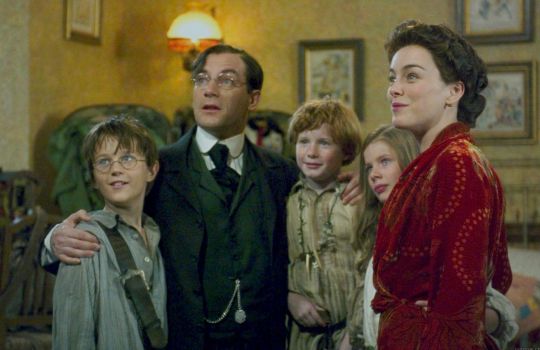
Peter Pan is an almost perfect adaptation. It matches the humour, the tone and the vision of J.M.Barrie. But I can certainly understand why the film didn’t do so well at the box office. In the month it was released, there was an unfair amount of competition, namely the film Lord of the Rings — The Return of the King. And as an adult, I can now understand why it’s not the film people think of or remember when it comes to Peter Pan adaptations. And it’s not just because it doesn’t fit the elfish, jolly trickster persona that Disney has created.
The film adaptation suffers more from what it doesn’t do — such as maintaining a stable tone and consistent editing — than from what it does. It’s one of those films that would have benefited from being much longer. That way, the inconsistent tone and some of the rushed parts of the adaptation would be much more balanced. It feels like it was missing an extra twenty minutes. For example, the film is narrated by an older version of Wendy, but without the deleted ending where it becomes properly clear that it’s her telling the story to tie everything together, the ending feels a little abrupt. Say what you will about Tim Burton’s adaptation of the Series of Unfortunate Events, but the audience could see where the film’s narration was coming from the whole time. I think if they knew the alternate ending wasn’t going to work (that scene is a classic example of something working well in the novel but not in the film), they should have removed the narrator altogether with the deleted ending and adjusted the film accordingly. They should have extended some scenes so that parts of the film weren’t rushed, such as the introduction, and the story would have been left more up to interpretation as there was no voiceover throughout.
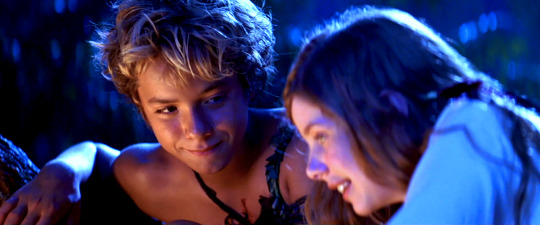
Despite its weaknesses, P.J.Hogan’s Peter Pan is still an underrated masterpiece 20 years later. It is an irresistible film that captivates and warms the heart. The film adaptation has certainly stood the test of time, staying true to the original while adding its own flavour to the story. It is full of magic, wonder and heart. It was clearly made by people who loved the origins of the story and explored where they came from, while also digging deep into the text to reshape the character arcs in a fresh and meaningful way. They succeed in capturing J.M.Barrie’s original message, which is that growing up is a natural progression of life, but that doesn’t mean leaving childhood behind entirely. That it is important to maintain a healthy balance between the two: Taking responsibility while appreciating the joys of life. From the vibrant colour palette to the goosebump-inducing music to the solid performances and gorgeous chemistry between Jeremy Sumpter and Rachel Hurd-Wood, my love for this adaptation will never end, no matter how old I am.
#peter pan#peter pan 2003#jason isaacs#jeremy sumpter#rachel hurd wood#peter and wendy#j.m barrie#peter x wendy#wendy darling#analysis#tinkerbell#captain hook#disney#peter pan and wendy#disney +#hook#James Newton Howard#olivia williams#novel#classic literature#filmmaking#film#cinema#culture#movie review#darling pan#finding neverland#film review#peter pan (2003)#peter pan live action
387 notes
·
View notes
Text
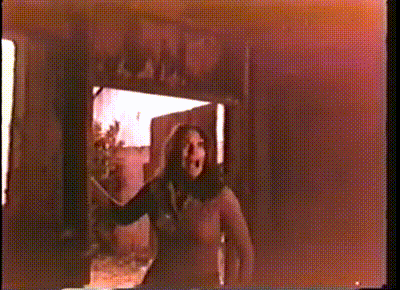
Three On a Meathook (1972)
#70s horror#cult classic#cult movies#cinema#horror film#cinematography#cinephile#cult cinema#cult movie#cult film#films#movies#film#horror#film frames#film stills#screencaps#horror films#horror movie review#movie review#horror movie recommendations#movie recommendation
159 notes
·
View notes
Text

#2000s#2000s nostalgia#2000s aesthetic#early 2000s#y2k#00s#2000s style#American Psycho#2002#movie#film review#favorite movies#film#cinema#movie stills#cinematography#classic#filmedit#cinemetography#art#fyp#luxury#model#movies#film photography#indeedgoodman#fashion#legend
81 notes
·
View notes
Text


My quest to watch 80 x 80s movies continues with the Sci-Fi classic, Blade Runner.
Blade Runner, this movie needs to be on everybody's movie bucket list. From the movies breath taking opening scene to when the credits roll, Blade Runner is hands down one of the greatest Sci-Fi movies of all time.
I'm a huge fan of Blade Runner and the novel it is based on, Do Androids Dream of Electronic Sheep. I've seen almost all versions and cuts of the movie, and my favourite one is the original cinema edit.
The story is thought provoking and with each watch of the movie, regardless of version, you always come away with a different viewing experience. Ridley Scott's direction is fantastic, the acting from the whole cast is incredible and the sets, wardrobe and visual effects are a wonder and shame a lot of modern Sci-Fi movies. Let's also not forget the beautiful and haunting score by the great Vangelis. All these elements come together to make a timeless classic that never tires regardless of how many viewings.
Tippy-top marks all round.
⭐️⭐️⭐️⭐️⭐️
#scifi#classic movies#movie night#movie#movie review#movies#80s movies#80#80s#80s retro#80s movie#80s science fiction#80s sci fi#80s film#film#film review#classic science fiction#classic sci fi#ridley scott#harrison ford#blade runner#cyberpunk#classic cyberpunk
39 notes
·
View notes
Text

“CLOCKERS” • 1995
- A Film By Spike Lee -
#Spike Lee#mekhi phifer#clockers#1995#90’s#styleinspo#film#films#film photography#filmmaking#35mm film#filmisnotdead#photography#styleinspiration#filmed#movie#movies#movie review#classic film#Classic movie#classic movies#camera#life#style#tumblr#actors#brooklyn#film making#film photograhers#filmedit
22 notes
·
View notes
Text
Because this is becoming THAT blog-
The one where I review old movies we all have already seen, but I personally, have not seen for years until recently.
I just watched “An American Tale.”
If you were a child of the 90s, you just thought- “There are No Cats in America 🎶? THAT American Tale?”
Yes.
If you had that thought, you likely already know. If you have not had the absolute joy- buckle up. I am going to rant about a classic.
First of all- This is Don Bluth.
His movies do not get worse with age.
They get BETTER.
And American Tale is example number ONE.
No, it is not fond memories or nostalgia glasses, you can breath, and then go treat yourself to a viewing.
Secondly- the man did not dumb down or sanitize his history.
He said “I’m going to tell the immigrant story” and then opened with a fucking ethnic cleansing.
I said what I said.
The movie is set in the early Russian Empire, a time full of anti-Semitic sentiment and enforced laws, also seen in “Fiddler on the Roof.” Fiddler on the roof might actually be tamer on the subject.
Every other historical note in this movie is on point and easy enough to look up in a history book, if you have the common sense to realize that names have been altered.
The Statue of Liberty was not built by a pigeon, for example. It was built by a Frenchman. (Frederic Auguste Bartholdi).
I don’t know of an “honest John,” but I did guffaw out loud when he started taking names of the dead at funerals to add to his vote count. Ghost votes were very real, one of the reasons people are still so twitchy about voter fraud today.
I do not recall a moment in 1886 when the minorities of New York managed to run off prominate members of authority… but with how on point everything else is? It would not shock me.
Thirdly- Bluth DID NOT FLINCH
I don’t remember who said it first, but both Bluth and Spielberg had a belief that you could put very sad and scary things in children’s films, as long as the ending was happy.
This movie has multiple nightmare moments. Cats, monster waves, more cats, bugs and fish, and of course, the horrifying “Mouse of Minsk” (iykyk).
The thing is, it’s not even how they are drawn. Like, yes, the image is scary, but it’s the storytelling around it. It’s the lighting change. The soundtrack. The horrific sound effects. Seriously- whoever did foley on this film deserves all the awards- you make me scared of the kitty kats, and I LOVE cats. 🐈
Some people will question whether or not it is appropriate for small children. I would say maybe wait until they are six, and watch it with them, but they should watch scary things if they can. Being scared in appropriately safe space teaches you how to react to fear and handle moments when you are scared in real life. It is my major argument for Halloween. But each parent has to do as they think is best for each individual child. In any case, watch this one first before showing it to your kids- definitely more scary than you remember.
Finally- the animation on this film is a national treasure. I honestly hope this film is in the Library of Congress collection.
There are animation techniques here that don’t exist anymore.
Sparks. Sparkles. Glimmers. Stars in the Night Sky. Smoke billows.
Actually, I almost paused the film on a smoke billow. Sony is doing some things in the recent “Spiderverse” trilogy that are insane- and part of it is their mixed animation.
All the smoke billows? Hand drawn.
They look the same as Bluth’s smoke in this film, which is making me wonder if one of their artists studied under him. Maybe not- maybe they just did their homework on good hand drawn cloud formations. Either way, realizing how close they got to the master work in this film made me appreciate them even more.
Speaking of insane animation-
I don’t know WHO Bluth felt he had to show off to, but this man could DRAW WATER and he fucking knew it.
Like water is hard to do, ok? Like hands, Da Vinci had notebooks full of sketches of the substance, proving it to be the bane of the artistic existence.
Most water in hand drawn animation comes in two forms-
Flat water color with pretty things floating in it to distract you-
Or drawn over a live video of water that they spliced into the image.
Even that was hard to do, and they used a technology no longer available to us. It looks pretty cool honestly.
But no, not DON fucking BLUTH.
Not only can this man hand draw water without the underlying video, but he draws it moving in multiple different ways. He shows it from the top, side, and sinking underneath (with moving bubbles and shifting light, no flat blue for him).
He turns it into a NIGHTMARE FUEL WAVE MONSTER.
He ADDS it to SCENES it DIDNT HAVE TO BE IN!
The more I watched this film, the more I realized that if Milt Kahl had the head swaggle, Don Bluth had water, and by God was he going to use it.
He wrote plots AROUND the idea of water, so he could showcase it in every scene. “Rock-a-doodle,” and “Pebble and the Penguin” come to mind. “Anastasia,” “Thumbelina” and “All Dogs Go to Heaven” all feature action scenes in water. Heck- the one in “All Dogs Go To Heaven” came out of no where, and makes so much more sense if it was just Bluth wanting to show off.
“An American Tale” had the travel by boat sequence and our main hero being thrown over board. He could have left it there. NOPE. There were puddles and sewers and fire hoses and action scenes at the docks.
And the few scenes without water? Let’s throw some scary sparks in there. Maybe some smoke billowing. For funzies.
Also- we’re going to have a Love Song with the most incredible Night Sky you have ever seen and a Comedic song featuring fun house mirror distorted reflections because WHY NOT???
I think he was trying to make sure Disney regretted him leaving, the way you dress up when you know your toxic ex will be there, and I love that for him. 🩷
Also- the backgrounds are all beautiful water color. I love a good water color.
Also- yeah, the sound track holds up. The songs are just as catchy as they ever were- if you have ever seen this movie you WILL find yourself singing along.
As previously mentioned, when it comes to the scary parts, the composer UNDERSTOOD THE ASSIGNMENT and the music easily fits into a good horror film.
And finally- the music at the finale when everything is made right, and the happy ending is finally here, is the most heart breaking thing you will ever hear. You will cry. Watch the movie, but bring the tissues. 🤧
This movie is definitely worth a watch.
This movie is more than worth a watch, it should be mandatory for elementary history and college animation classes alike.
But also it’s just fun. 🤩
#American Tale#Don Bluth#drawing water#movie review#classic animation#sometimes that movie is just as good or better than you remember#seriously- if this ISNT in the Library of Congress can we petition to get it in?#Fival Moukiwitz#Bluth said they took thier names at Ellis Island we are GIVING THEM BACK in this film#no shortcuts#the more I watch his films the more I love this man#no one tell me if he was a terrible person#My heart would shatter#He also said cultural music and traditions is how you recognize family 😭#“Keep playing! He might hear you! 😭#storytelling#one of the masters#if Miyazaki and Bluth ever met it would be the most beautiful meeting of the artistic souls
33 notes
·
View notes
Text
Halloween Horror: Häxan (1922)

Häxan's genre defying structure makes it hard to summarize. Wikipedia valiantly offers "Silent Horror Essay", a pretty decent stab at encompassing all seven reels of this silent Swedish classic. In the early parts, director Benjamin Christensen walks us through an academic lecture on the medieval conception of the cosmos and of superstition, aided by scale models of the universe. This section feels like a proto video essay. Then, it becomes an astonishing special effects horror showcase of rites and devil worship. Then, a multi-part melodrama of inquisition, false accusation, and torture, as a town falls to witch hunt mania. Finally, it introduces a melodrama in the present of mental illness and treatment, bridging past and present with its video essay elements.
I heard the bookends around the film described as a scholarly pretense for pure spectacle of the middle section. And boy there's some spectacle! I didn't really expect it to go quite as far as it does into perverse fantasy and sadomasochism. There's a whole sequence where a priest, consumed by lust for a village woman, ecstatically receives the lashes of a flail, his agonized expression superimposed on the whipping. Later, Christensen remarks in intertitles that one of his actresses insisted on trying his thumb screws. Juxtaposed with footage of the actress laughing and gasping, the intertitles remark coyly that they won't repeat all the things she confessed to after just one minute in the device. This fascination with pain, paired with shots of, for example, nude witches going to meet with the devil, suggests a knowing, post-Psychoanalytical overt desire to delve into erotic fantasy. It's not even implausible Christenson intended the homoerotic undertones in the whipping scene, or a later sequence where blasphemous mania overtakes a convent of nuns. After all, he starred himself in role of a young bisexual man in Michael just two years later. Queer people existed as much in the 1920s as the 2020s.
I get why surrealists loved the wild subconscious phantasmagorias of this film. It doesn't hurt that the film takes a bullish stance toward the new science of psychotherapy, suggesting that witch manias have an earthly cause in the human mind, even implying that they emerge from repressed desires. (Moreover, witch accusations come, as they do in The Crucible, from people jockeying for petty social advancement, or lashing out at the vulnerable.) In one of the middle sections, there's a lengthy sequence where witches cavort at a black sabbath with all manner of (stunningly costumed!) devils. The special effects are mesmerizing to watch--so much so that it's easy to forget the whole narrative is being related by an old homeless woman sadistically tortured by witch-mad priests. As it cuts back to the lurid, slavering excitement the priests display at each new concocted detail, each new accusation the old woman levels--against the very women of the village who denounced her in the first place!--it becomes clear that the lurid phantasmagoria is none other than the titillating fantasies of those selfsame priests. Forget Blazing Saddles, I don't think you could make a film like this today, a big budget expose of the perversities of the most holy fathers of the church.
After all the mesmeric special effects, the horror of witchcraft giving way to the horror of inquisition, the film concludes with a series of shocking juxtapositions: if the witches of the past are the mentally ill (the "hysterics" in the film's parlance) of today, aren't they still with us? And do we treat them so much better? I made a sarcastic crack to my friends midway through that Seattlites react to homeless people with the same conviction as the peasants in the film, that these are fearful creatures bound to put the evil eye on them. The film shocked me later when it pronounced directly that the inquisitor of the past is the law of today, and we've traded burning at the stake for prisons and institutions.
I don't know that Häxan is ahead of its time, exactly. Rather it reminds us that as long as Horror has existed as a genre, artists have used it to turn the floodlights on society and suggest that the real horror is how we treat each other. And, hey, also, turn the floodlights on the murky subconscious and say: oh boy what gooey nonsense is happening down HERE? What thoughts did you have lurking in your head, only now articulated through the witchcraft of the big screen? The best compliment I can give Häxan is that it is, simply put, a horror movie, and what makes it great haven't really changed all that much in 100 years.
Read more horror reviews like this all season on my Patreon
#halloween#spooky season#happy halloween#horror movies#horror review#classic horror#haxan#silent film
18 notes
·
View notes
Text

Why is Scream one of the best horror movies?
(extremely biased)


The first reason is Skeet Ulrich.
But I seriously think that by the mid-1990s, horror movies had become predictable, with cliché plots and worn-out tropes. Most people got tired of it, I presume. Scream revitalized the genre by being both a horror movie and a clever deconstruction of the genre. It acknowledged the clichés of horror films while using them in innovative ways, with genuine suspense.
The movie had references about many horror classics, such as Halloween, Carrie and Jamie Lee Curtis. I found it really cool that many of the characters were horror movie fans, like Randy, Stu and Billy.

The Ghostface mask became instantly recognizable, and the movie kept audiences guessing about the identity of the killer. But sadly, it was kinda obvious from the beginning.
Most of the people guessed the killer right. I mean, Billy appears every single time where Sidney is in danger while being absolutely suspicious. However, I still liked how Wes Craven tried to trick our mind by making us believe that Billy wasn't the killer, without us knowing that Woodsboro had two damn ghostfaces. This is THE plot twist of the movie, I think.
And how can I post this without talking about our lovely final girl, Sidney? She is one of the best final girls I don't care. That girl is BRAVE, also smart. She runs this franchise, and I can't wait to see her in Scream 7.
I miss Tatum, by the way.
Scream was filled with sharp, self-referential dialogue. The characters openly discussed horror movie rules "Never say 'I'll be right back" while falling victim to them, making it as much a commentary on horror as a part of it.
The movie also balanced moments of intense terror with humor, making it accessible to a wider audience. The satire never undermined the scares but rather enhanced them by making the characters feel more real. Every character made me laugh at least once.
I can also talk about the feeling of watching Scream for the first time. It's something I can't describe myself, I just enjoyed it so much, without even blinking since I was concentrated. That's why I feel so attached to it, for an unknown reason. I just feel it.
Finally, Scream left a lasting legacy, influencing countless horror films and spawning a successful franchise. It brought horror back into mainstream popularity in the '90s and remains a reference point in pop culture.
In conclusion, Scream wasn’t just scary—it was smart, funny, and bold, changing the way audiences viewed horror films forever.

#scream#scream franchise#horror#halloween#cinema#horror movies#horror classics#horror cinema#ghostface#woodsboro#billy loomis#sidney prescott#gale weathers#cinephile#movie lover#film#film review#blog#cinematography
15 notes
·
View notes
Text
FILM REVIEW: Roman Holiday
★★★★★ - 5 stars
"What the world needs is a return to sweetness and decency."

During her grand tour of Europe, an adventurous, young princess escapes into Rome during the middle of the night. While she explores the city, she falls in love with an American journalist.
Roman Holiday is a light-hearted, adorable romance with a bittersweet ending. It takes the viewers by the hand and guides them down the streets of an ancient and tremendously cultural city. Be prepared to consult TripAdvisor, because, after an hour and fifty-eight minutes of watching Audrey Hepburn and Gregory Peck's dazzling love affair, you will most certainly feel the need to travel. The film encapsulates the beauty of Rome through a classy and glamorous lens - black and white in colour and yet brimming with emotion. It shows the human desire for thrilling escapades and freedom from the constraints imposed upon us - be it through work, school or, as in the film, our living situation. Regardless of whether riding on a motorbike, daring fate at the La Bocca della Verità and eating gelato in Rome is your idea of freedom, these actions incite a hunger for adventure within viewers.
This cult classic film plays with many tropes including, but not limited to, 'the important haircut', 'the bet', and 'the rebellious princess'. While many tropes are used to fuel the drama and plot of the film, others add to its cathartic and fun nature. The most notable use of a trivial trope is when Princess Ann has her hair cut into a pixie cut - though an act of rebellion and freedom, it shows spontaneity and relatability in her character, making Roman Holiday even more entertaining to watch.
Having defined the very nature of the genre over the past seven decades, Roman Holiday is a must-watch romantic comedy and perfect for a vintage film binge.
#roman holiday#film and tv#film review#old hollywood#vintage films#audrey hepburn#gregory peck#classic films#classic movies#old movies#classic hollywood#citizenscreen#film blog#film and television#romantic comedy#rome
24 notes
·
View notes
Text

Different day, different book, same cord bag!
I just got this new Green sketch book for my birthday, the paper is that perfect weight that prevents seep through but isn’t so stiff that it’s uncomfortable to use.
#art#journal#books#bookstagram#booktok#bookblr#books and reading#book blog#book quotes#book review#light academia#light acadamia aesthetic#classic academia#sketch#sketchbook#photography#vintage aesthetic#camera#film photography#film camera#cozy academia#dark academia aesthetic#soft academia#art academia
68 notes
·
View notes
Text

Kneecap (dir. Rich Peppiatt).
[The] controversial West Belfast hip-hop trio, [...] known for rapping republican lyrics in their native Irish language, star in their own titular biographical film about their rise to fame and infamy. Set in 2019, [...] Peppiatt directs the plainly titled Kneecap with an energetic, riotous verve to its provocative, explicitly anti-UK material of rebellion.
#kneecap#kneecap movie#michael fassbender#movie review#movies#movie#film review#film#sony pictures classics#belfast#west belfast#indie film#indie movie#cinema#irish film#rich peppiatt#northern ireland#north of ireland#irish language#jessica reynolds#mo chara#móglaí bap#moglai bap#dj próvaí#dj provai#liam og o hannaidh#naoise o caireallain#jj o dochartaigh#rap#bfi
31 notes
·
View notes
Text









The Holdovers (2023)
Directed by Alexander Payne
#The Holdovers#Paul Giamatti#DaVine Joy Randolph#Dominic Sessa#Alexander Payne#Christmas Movie#Holiday Film#Classic Cinema#Film Review#Movie Night#Cinephile#Vintage Film#Drama Film#Comedy Film#Indie Film#New Release#Must See#Film Lover#2020s Film#1970s Setting#70s Nostalgia
12 notes
·
View notes
Text







Pieces (1982)
#80s horror#cult classic#cult movies#horror film#cinema#cinematography#cinephile#cult cinema#cult film#cult movie#films#movies#film#horror#film frames#film stills#screencaps#horror films#horror movie review#movie review#horror movie recommendations#movie recommendation
89 notes
·
View notes
Text



#90's movies#jason james richter#captivity#family movies#warner bros#killer whales#killer whale#whales#whale#aquatic#oceans#marine mammals#90s kid#90s#90s nostalgia#1990s#movies#movie review#movie recommendation#michael madsen#adventure movies#free willy#whale movie#orca#orca whale#classic movies#marine life#90s classic#90s films
19 notes
·
View notes
Text

Movie Night!
It's October, 80s movies all done. I thought I would kick off with something a bit scary.... Event Horizon.
Infinite space - Infinite terror
Event Horizon is about a rescue crew that investigates the mysterious reappearance of a spaceship that had been lost for seven years. The crew discovers an unimaginable interstellar horror that tests their sanity and souls.
Event Horizon has aged well. Still a great looking, well acted and poop your pants scary movie! Having seen this movie more than once over the years, it still surprises me how Event Horizon still manages to be creepy, tense and engaging. Yes, the story and acting can be a little cheesy in places, but generally, a very solid science fiction horror movie.
⭐️⭐️⭐️⭐️
#scifi#sciencefiction#horror#sci fi horror#classic movies#movie night#movie#movie review#sci fi movies#classic film#film review#event horizon#movie poster
21 notes
·
View notes